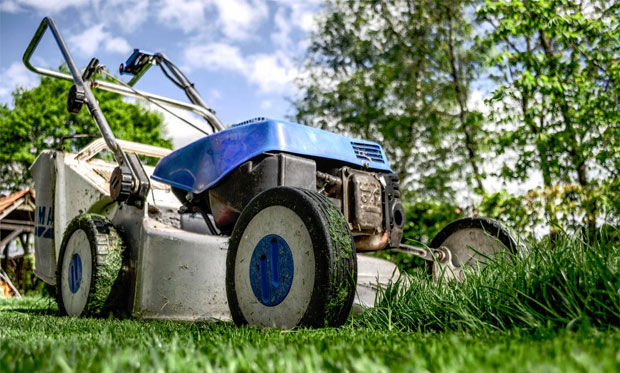How Do I Choose The Right Vertical Shaft Mower Engine For Uneven Terrain?

Choosing The Right Vertical Shaft Mower Engine For Uneven Terrain
Choosing the right vertical shaft mower engine for uneven terrain is crucial for maintaining a well-manicured lawn. These engines are designed specifically for push-behind lawn mowers, with the crankshaft positioned vertically to connect directly to the cutting blade. The optimal vertical shaft mower engine for uneven terrain should have sufficient power, typically ranging from 4 to 7 horsepower, to handle slopes and bumps effectively.
When selecting a vertical shaft mower engine for challenging landscapes, consider factors such as engine displacement, torque, and fuel efficiency. Larger engines with higher displacement generally provide more power, which is beneficial for tackling hills and rough patches. Additionally, engines with higher torque can maintain blade speed under load, ensuring a consistent cut across varying terrain.
Key Takeaways
- Choose an engine with 4-7 horsepower for optimal performance on uneven ground
- Consider engine displacement and torque for tackling challenging landscapes
- Fuel efficiency is important for longer mowing sessions on larger, uneven properties

Understanding Vertical Shaft Engines for Lawn Mowers
Vertical shaft engines are essential components of many lawn mowers designed for tackling uneven terrain. These engines offer specific advantages for maneuvering on slopes, hills, and rough landscapes.
Engine Power and Torque Requirements
Vertical shaft mower engines typically range from 140cc to 190cc for residential use. Higher displacement generally correlates with increased power output. For uneven terrain, engines with 5 to 7 horsepower are often suitable.
Torque is crucial for maintaining blade speed under load. Look for engines with peak torque ratings between 6 to 9 ft-lbs. This ensures consistent cutting performance on inclines and through thick grass.
Some manufacturers offer overhead valve (OHV) designs. These engines often provide better fuel efficiency and more torque at lower RPMs compared to side-valve models.
Terrain Challenges and Engine Capabilities
Uneven terrain presents unique challenges for lawn mower engines. Steep slopes can cause oil starvation in poorly designed units. Look for engines with pressurized lubrication systems to maintain proper oil flow at angles.
Vibration dampening is important on rough ground. Engines with counterbalance shafts reduce vibration, improving operator comfort and machine longevity.
For hilly areas, consider engines with high-capacity oil sumps. This helps maintain proper lubrication during extended operation on inclines.
Fuel delivery systems matter too. Engines with float-bowl carburetors may experience fuel starvation on steep slopes. Diaphragm carburetors or fuel injection systems offer more consistent performance in these conditions.
Features for Enhanced Maneuverability
Electronic ignition systems improve starting reliability, especially in damp conditions often encountered on uneven terrain. Look for engines with this feature for consistent performance.
Dual-element air filters are beneficial in dusty environments. They provide better engine protection, extending service intervals and engine life.
For self-propelled mowers, engines with integrated transmissions simplify the drivetrain. This can improve weight distribution and handling on uneven ground.
Some advanced engines offer electronic governor systems. These maintain consistent blade speed regardless of load, ensuring an even cut across varying terrain.
Noise reduction features like muffler baffles and sound-dampening enclosures improve operator comfort during extended use on large, uneven properties.

Selecting the Right Mower for Uneven Terrain
Choosing the appropriate mower for uneven terrain requires careful consideration of several factors. The right equipment can make a significant difference in efficiency, safety, and the quality of the cut on challenging landscapes.
Choosing Between Mower Types
Push mowers, self-propelled mowers, riding lawn mowers, and zero-turn mowers each have their strengths for uneven ground. Push mowers are best for small, mildly uneven yards. Self-propelled mowers offer more power and ease of use on moderately uneven terrain.
For larger areas with significant unevenness, riding mowers or zero-turn models are often preferable. Zero-turn mowers provide excellent maneuverability around obstacles and on slopes. Rear engine riding mowers can be a good compromise, offering a compact size with the benefits of a riding mower.
The cutting deck size and adjustability are crucial. Wider decks cover more ground but may scalp uneven areas. Look for mowers with easily adjustable cutting heights to adapt to terrain changes.
Key Considerations for Engine and Mower Selection
Engine power is vital for tackling uneven ground. Gas-powered engines typically offer more power for rough terrain, while electric and battery-powered options are improving in capability.
For hilly areas, consider:
- Engine displacement (cc) for gas models
- Voltage and amp-hours for electric/battery models
- Transmission type (hydrostatic preferred for hills)
Weight distribution affects stability. Heavier mowers can provide better traction but may be harder to maneuver. The mower’s center of gravity should be low for improved stability on slopes.
Features like all-wheel drive or large, rugged wheels can significantly enhance performance on uneven ground. Some mowers offer differential lock for improved traction when needed.
Ensuring Longevity and Ease of Maintenance
Durability is paramount for mowers used on rough terrain. Look for robust construction, reinforced decks, and protection for critical components. High-quality materials and construction will withstand the extra stress of uneven ground.
Regular maintenance is crucial. Consider:
- Ease of access to air filters and spark plugs
- Simplicity of deck cleaning
- Availability of replacement parts
Fuel efficiency matters for gas-powered models, as uneven terrain can increase fuel consumption. For electric models, battery life and charging time are important factors.
A comprehensive warranty can provide peace of mind. Check coverage details, especially for components that undergo more stress on uneven ground.
Choose a mower with multiple discharge options. Mulching can be beneficial for soil health, while bagging or side-discharge may be preferable in certain conditions.

Conclusion
Selecting the right vertical shaft mower engine for uneven terrain requires careful consideration. Engine power, torque, and durability are crucial factors to evaluate. A robust engine with sufficient horsepower and torque will handle slopes and rough patches more effectively.
Proper maintenance and regular servicing ensure optimal performance on challenging landscapes. By choosing wisely and caring for the engine, homeowners can achieve a well-manicured lawn even on difficult terrain.
Guest Article.




